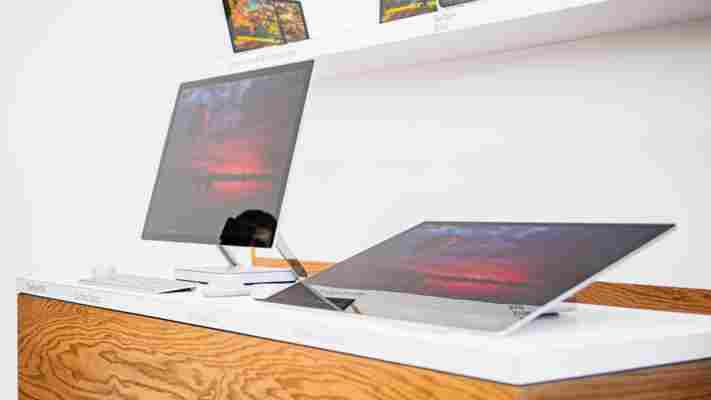Microsoft announced the Surface Studio and Dial last month as definitive proof that desktop computers still have ample room to innovate. From the excellent launch trailer to my hands-on demo, it was hard not be impressed.

But truth is, the best thing about the Surface Studio may not be made by Microsoft at all.
With the initial hype worn out, it’s easy to pick the Studio apart. It starts at $3,000. It uses last year’s CPUs and last year’s mobile GPUs. Storage is a slow hybrid SSD/HDD. There are no USB-C (let alone Thunderbolt 3) ports. The display can’t be used as an external monitor or dock. The Pen isn’t tilt sensitive. The Dial is a separate accessory.
Did I mention it starts at $3,000?
Of course, the price reflects more than just the specs; it’s indicative of the design and cohesiveness of the system. The Studio is unlike any computer on the market, and that uniqueness will cost you.
That innovation-at-a-premium approach is decidedly Apple-like. But then I remembered: This is Microsoft, the Studio is a Windows PC, and Windows means options.
Much like it did with tablets and laptops, Microsoft is going to make the convertible desktop a thing. Of course, not to the degree we’re now seeing it with portable computers – the desktop is well past peak popularity – but you can bet you’ll see all-in-ones with crazy form factors and accessories show up all over the place in the next few years. Dell’s already gone ahead and teased one .
Point is, if the Studio is too expensive, someone is going to make a PC with similar features for cheaper. If you want one that can handle high-end gaming, someone will make one of those too. No PC will be perfect, but you’ll have plenty to choose from.
And that’s exactly what Microsoft wants. It collaborated with hardware partners on at least some Surface clones and laptops, and all signs suggest it will do the same now with desktops.
So while Microsoft may have a taken a few leaves from Apple’s book over the past few years, it’s doing so without abandoning the core value that has always differentiated Windows from Mac: choice.